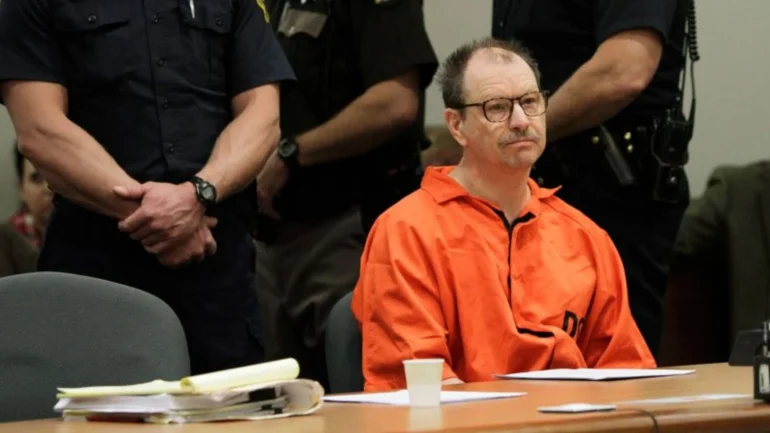The Green River killer went on his sprees in July 1982 after Wendy Caulfield, 16, was discovered murdered in Seattle’s Green River.
He then murdered four more women, all snapping the spinal cord by choking them; this led to the formation of Green River Task Force.
Ridgway only focused on attacking females with poor reputations as prostitutes or who are runaway, he invited loved ones to his home and thereafter murdered them.
He successfully passed a polygraph test in 1984 when he was being questioned but was only arrested in 2001 after DNA evidence linked him to the murder.
Formation of the Green River Task Force
In response to the increasing number of victims in the Green River murders, the King County Sheriff’s Office created the Green River Task Force in 1982.
This team was essential in investigating the deaths of many women, especially those who were runaways or sex workers, found along the Green River.
Important members included Sheriff Dave Reichert, who was one of the first to arrive at the crime scenes, and Robert Keppel, a detective who helped identify the killer.
The task force encountered many challenges as they looked through a lot of evidence and considered many suspects, leading to a long investigation that took almost 20 years. It wasn’t until 2001 tha Gary Ridgway, the Green River Killer, was caught.
Early Investigative Efforts
When the Green River Killer case started, police had a hard time figuring out who the first suspect was.
They found many bodies near the Green River but couldn’t clearly link them to anyone.

They checked out hundreds of people but couldn’t find enough proof to arrest anyone, like Green River Killer, who was cleared after a lie detector test in 1984.
The problem was, the forensic tools back then weren’t very good; they collected a lot of evidence like hair and fibers but couldn’t prove it was from the killer.
It took better DNA technology and looking at small clues again, like special paint particles found at Ridgway’s job, for them to finally connect him to the crimes in 2001.
The Role of Forensic Science
By 2001, DNA testing had improved so much that it helped solve the Green River murders by clearly connecting Green River Killer to the crimes.
New methods like PCR and STR analysis made it possible to study very small DNA samples from crime scenes, which were too small to use before.
This made it easier for detectives to look at old evidence again and find strong matches between Ridgway’s DNA and that of the victims.
Also, finding unique spray paint particles on some victims’ clothes that matched Ridgway’s workplace was very important.
These improvements in DNA testing and finding small clues helped catch Ridgway after almost 20 years of trying.
The Breakthrough in Evidence Collection
Using new DNA testing and examining old evidence again helped solve the Green River Killer case.
By 2001, better DNA tests meant investigators could look at old samples again, which hadn’t been clear before.
They found paint on some victims’ clothes that matched a certain kind used at Green River Killer’s job.
This link proved Ridgway was connected to the victims, making the case stronger and leading to his arrest.
Plea Bargain and Confession
Gary Ridgway’s confession was crucial in solving the Green River Killer case. After strong evidence connected him to many murders, his lawyers suggested he confess to some in return for not being sentenced to death.
This deal, agreed upon on November 5, 2003, made him admit to 48 murders and promised he would help find more victims’ remains.
He would get life in prison without parole instead of death, which helped investigators find more bodies and bring closure to families who had been waiting for answers.
Victim Identification and Recovery Efforts
Green River Killer helped police find more victims after he was caught. He told them where he buried bodies, leading to the discovery of many that hadn’t been looked at before.
For example, he pointed out the bodies of Sandra Majors and Lori Anne Ratzpotnik, who were identified later with DNA.
But, it was hard to identify some remains because they were very old or in bad condition.
Many victims were decomposed or just bones, making it tough to figure out who they were.
Legal Proceedings and Sentencing
In 2003, Gary Ridgway was found guilty of 48 counts of first-degree murder after agreeing to plead guilty to avoid the death penalty.
He was sentenced to 48 life sentences without parole, with an extra 10 years for each victim’s evidence tampering, adding up to 480 years.
This sentence highlighted the seriousness of his crimes and aimed to provide some justice for the victims’ families.
Public Reaction and Media Coverage
The case of Green River Killer, Gary Ridgway has been widely featured in media and hence touching so many people.
His story has been represented in TV programs, in books and documentaries, as a criminal, as a psychopath, and as a man hunted down.
Besides narrating the criminal gruesome acts committed by Ridgway, this coverage has also described the plight faced by vulnerable women particularly those of the sex working type and how they became vulnerable targets.
Public action has resulted in debate on better policing and concerning policies as well as support to vulnerable groups and persons.
An analysis of the Green River Killer case provides the best illustration of the subject of serial violence and society’s implication.
About Gary Ridgway one should discuss supporting the victims, the work of the police, and the help in the community to prevent such mishaps.
The moral lessons of this case are that one has to be awake and friendly to the needy people society tend to take a blind eye on.

